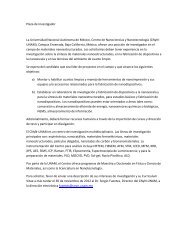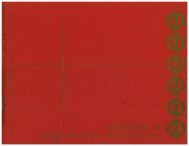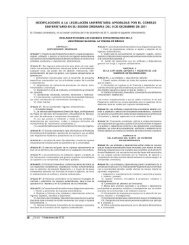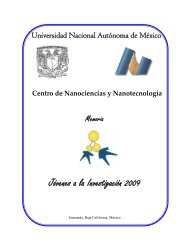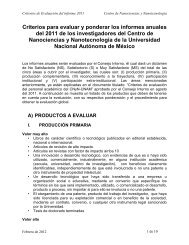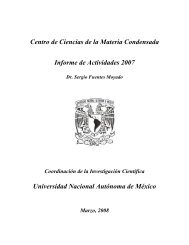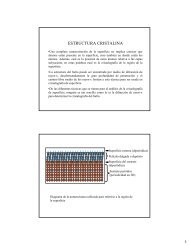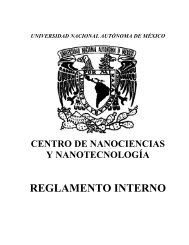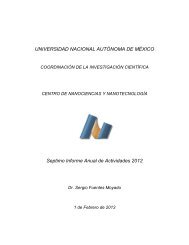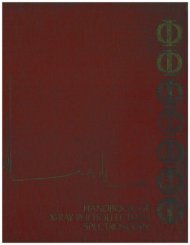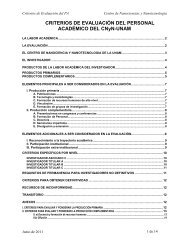Universidad Nacional Autónoma de México - CNyN
Universidad Nacional Autónoma de México - CNyN
Universidad Nacional Autónoma de México - CNyN
You also want an ePaper? Increase the reach of your titles
YUMPU automatically turns print PDFs into web optimized ePapers that Google loves.
1st International Symposium on Nanoscience and Nanomaterials<br />
response in excess of two or<strong>de</strong>rs of magnitu<strong>de</strong> higher than single-phase materials. In these composites, the<br />
origin of magnetoelectric properties resi<strong>de</strong>s, in general, in the elastic interaction among the constituent phases<br />
via stress/strain mediation. Within this talk, the <strong>de</strong>pen<strong>de</strong>nce of the magnetoelectric response to the coupling at<br />
the interface and connectivities between the phases, in addition to the their intrinsic properties will be<br />
discussed. Furthermore, an overview of the research done in this line by the group at CIQA, ranging from<br />
particulate (0-0), to core-shell and columnar 1-3 like composites, is presented. As a base system, preparation,<br />
properties and interactions in BaTiO 3 /CoFe 2 O 4 nanostructured composites in several connectivities are<br />
presented. In addition the results of simulations of the magnetoelectric coupling in or<strong>de</strong>red nanocomposites,<br />
using a hybrid finite element mo<strong>de</strong>l are presented and discussed. Within the mo<strong>de</strong>l, the <strong>de</strong>formation and stress<br />
on the piezoelectric phase are estimated and used to simulate the magnetization reversal un<strong>de</strong>r stress in the<br />
composite nanotubes, using an updated micromagnetic framework to inclu<strong>de</strong> the magnetostriction effect.<br />
Finally, recent progress in characterization techniques to measure direct and inverse magnetoelectric<br />
coefficients in an unified magnetic/magnetoelectric measurement platform is summarized.<br />
PLENARY XIII<br />
CONNECTING THE NANODOTS: PROGRAMMABLE NANOFABRICATION OF FUSED METAL<br />
SHAPES ON SELF-ASSEMBLING DNA TEMPLATES<br />
Gleb Finkelstein<br />
Duke University<br />
DNA self-assembly is a novel branch of nanotechnology, which utilizes tools borrowed from<br />
biochemistry in or<strong>de</strong>r to <strong>de</strong>sign and create complex artificial structures. Our group has recently <strong>de</strong>veloped a<br />
novel method for producing complex metallic nanostructures of programmable shape. We work with "DNA<br />
origami" - a type of self-assembling 2-dimensional nanostructures about 100 nm in size. DNA-functionalized<br />
gold nanoparticles are attached to the DNA origami templates; these seed nanoparticles are then enlarged,<br />
and even fused, by electroless <strong>de</strong>position of silver. Using this method, we construct a variety of metallic<br />
structures, including rings, pairs of bars, and H shapes. These structures may be interesting for a variety of<br />
applications in electronics and plasmonics.<br />
PLENARY XIV<br />
THE CHALLENGES OF FABRICATING NANOCRYTALLINE LUMINESCENT MATERIALS<br />
Joanna McKittrick<br />
Mechanical and Aerospace Engineering<br />
Materials Science and Engineering Program<br />
University of California, San Diego<br />
La Jolla, CA<br />
There is great interest in nano-sized light emitting materials (phosphors) for applications such as in<br />
solid-state lighting, display screens, scintillators and biological markers. The materials (phosphors) are<br />
composted of an inert host (e.g. oxi<strong>de</strong>, sulfi<strong>de</strong>, nitri<strong>de</strong>) and a few atomic percent of a substitutional activator<br />
ion (transition or rare-earth element). Un<strong>de</strong>r external excitation, photons are produced with energies ranging<br />
from the x-ray to IR, <strong>de</strong>pending on the host and activator compositions. Despite advantages of having a small<br />
size, which inclu<strong>de</strong>s reduced light scattering, higher resolution (for display screens) and the potential to use<br />
8




